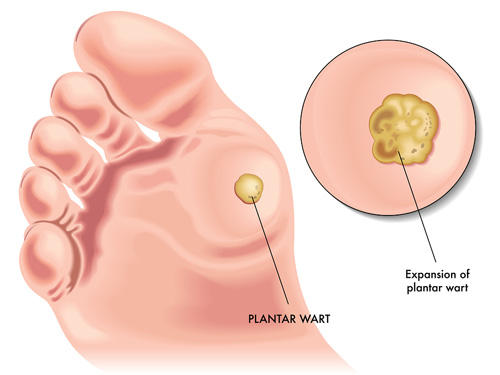
Children and teenagers are also susceptible to warts. They may spread from one place on the body to another simply through touch.Īnyone can get warts but they are most common in anyone with a weakened immune system, as from illness or chemotherapy. They may appear singly or in clusters.Ĭommon warts are caused by the human papilloma virus (HPV) and are contagious through direct contact, especially through a break in the skin.

Warts, also called common warts or verrucae, are small, rough, rounded growths on the top layer of the skin. They are dome-shaped, appear red, and bleed with trauma.
:max_bytes(150000):strip_icc()/plantar-warts-resized-56a315a85f9b58b7d0d04d6f-85edcc610ada498f887d524e00b8f7d2.jpg)
#PAINFUL WHITE SPOT ON BOTTOM OF FOOT SKIN#
There are also viruses that can infect the top layer of skin and result in skin growths as well. See an image of an abscess on the arm here. If unnoticed, abscesses can harden over time and result in visible bumps that may affect ambulation, or postoperative care where you resume light activity such as standing and walking. Infectious: Bacteria can easily enter cuts and lesions of the feet and result in infectious abscesses - pus-filled pockets within the body tissue.Inflammatory causes that can result in hard foot lumps include the following. Most of these conditions are easily visible, usually benign, and include conditions such as skin tags, cysts, and neurofibromas. Many causes of hard foot lumps are dermatologic in nature and affect the different layers of the skin - the epidermis, dermis and subcutaneous layer. These lesions can worsen and develop into large, hard bumps.

If sensation is affected in the foot, it may be difficult to notice initial lesions. It results in a loss of sensation and numbness, especially in the extremities. Peripheral neuropathy is the medical term for nerve damage. The feet are also susceptible to the development of hard lumps and bumps due to conditions such as peripheral neuropathy. Damage and injury to any of these components can result in hard lumps and associated symptoms. Muscles, tendons, ligaments, and nerves run along the surfaces of these structures, providing motion, balance, and sensation to the foot. The forefoot is composed of the five toes (phalanges) and the five longer bones (metatarsals) the midfoot is a collection of bones that forms the foot’s arches, and the hindfoot is composed of the heel and ankle. The feet are divided into three main parts: the forefoot, the midfoot and the hindfoot.


 0 kommentar(er)
0 kommentar(er)
